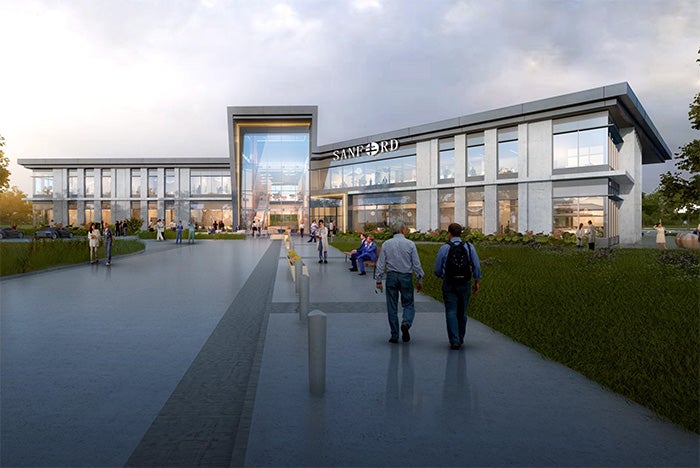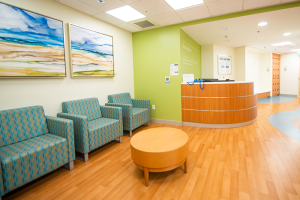Sanford Health builds virtual care center to serve rural needs

The new Sanford Health Virtual Care Center will serve as a hub to provide greater access to care for patients across its health system.
Image courtesy of Sanford Health
As one of the largest rural health systems in the United States, Sioux Falls, S.D.-based Sanford Health has gone all in on virtual care. In 2021, the health system launched a $350 million virtual care initiative intended to transform health care for rural and otherwise underserved areas. It’s moving closer to that goal with progress underway on its 60,000-square-foot Virtual Care Center (VCC).
The VCC’s primary aim is to provide a space in which clinicians can connect directly to patients in remote satellite clinics, allowing these patients access to a wider range of expertise and resources. The center will feature dedicated clinician workspaces equipped with telemedicine technology able to support a variety of service lines, including on-demand urgent care, behavioral health care and primary care.
Architectural firm HKS Inc. has guided Sanford Health through the VCC design. However, features have also been informed by clinicians, end users and other health care systems innovating in the delivery of virtual care.
“We toured and talked with a few other virtual and innovation spaces across the country to get some ideas, best practices and lessons learned,” says Susan Berry, vice president of operations for virtual care at Sanford Health.
The Sanford team decided on an open-concept space that would allow greater flexibility to accommodate future needs and evolving service lines.
“We wanted to provide really good daylight and views all around, especially in an environment where people are going to be sitting at their desks most of the day,” says Jorge Barrero, a regional design director and principal at HKS.
However, the open concept created a few challenges in ensuring patient privacy and preventing potential distractions for clinicians able to overhear other conversations. Tall cubicle walls, acoustic ceiling clouds and sound-masking systems work together to help address those issues for staff.
Behind the walls, the Sanford team has followed its standard technology and network design workflow, and incorporated the electronic health record that was already in use across the enterprise. But while the network design may be standard, the technologies it’s powering are anything but typical. Among other features, clinicians are supported with a dedicated technical operation center equipped with proactive monitoring capabilities.
“We expect this will help drive a positive experience for clinicians and patients as we see more technology and services expanding to patient homes, for example,” Berry says. “We’re also designing data platforms that will allow us to capture and utilize data from things such as patient wearable devices or smart home technologies.”
Alongside the clinician workspaces, the VCC features a dedicated space meant to drive innovation and education around future health care delivery models and solutions. The VCC will have room for training medical students, residents and nurses on virtual care delivery, and support innovation, education and research initiatives to advance digital health care. Berry notes that the innovation space features its own dedicated network to accelerate the process of testing new technologies.
Shortly after construction is completed in September 2024, the VCC will serve as the hub for a broader network of satellite clinics. Yet, the virtual care team is already incorporating insight gleaned from its first operational clinic in Lidgerwood, N.D., back into the VCC design.
As of August 2023, the digital connection between Lidgerwood and care practitioners in nearby Wahpeton, N.D., have enabled the Lidgerwood clinic to expand its hours and services for the approximately 600 people in town. It has also provided the VCC operations team an opportunity to perform a comprehensive network evaluation to ensure reliable connectivity between the clinic and the future VCC.
While the network has proven reliable, the operations did make one essential update to the Lidgerwood clinic.
“The only consideration that we probably did not think of initially was around security,” Berry says. On days when patients receive only remote care, the facility is staffed by a single nurse. When patients arrive at the clinic for a virtual visit, they check in and the nurse takes the lead in performing the exam portion of their visit and connecting the patient to the remote provider. The provider can assess the patient’s condition with assistance from the nurse.
“Because the nurse is the only employee in the building with patients, we ended up installing an extra security door,” Berry says.




